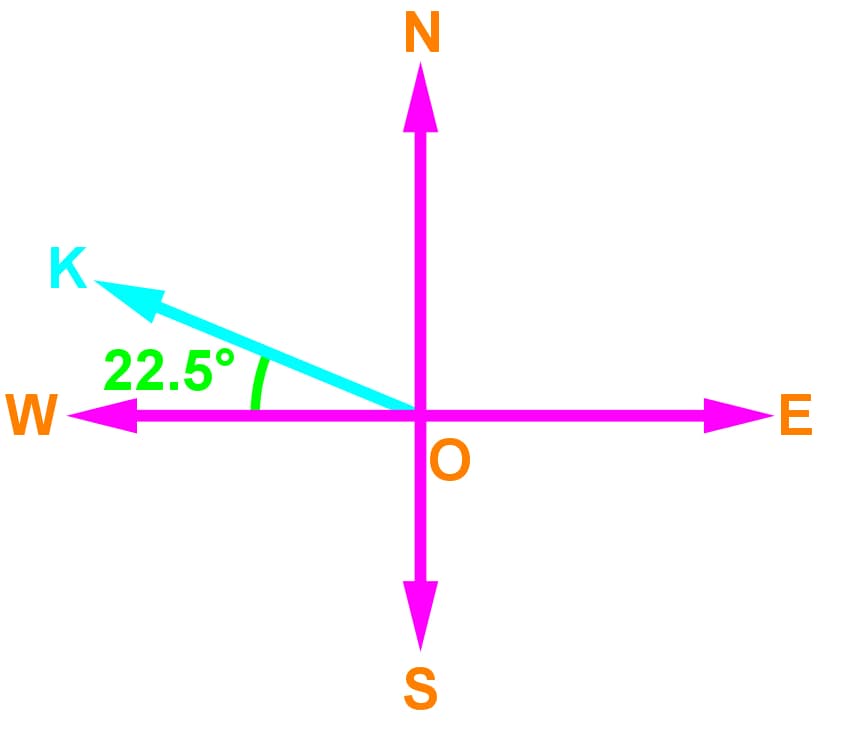3 main types of bearings:
- Standard compass bearings
- Compass bearings
- True bearings
Cardinal Points: the 4 basic standard bearings (East, South, West, North)
Compass bearings: the number of degrees east or west of north of south.
True bearings:
- Angle measured clockwise to the bearing line from the north
- The symbol T is to indicate that it is true bearing, but sometimes it is omitted
- For bearings less than 100°, use 3 digits with the first digit being a 0. (e.g. 045°T)







